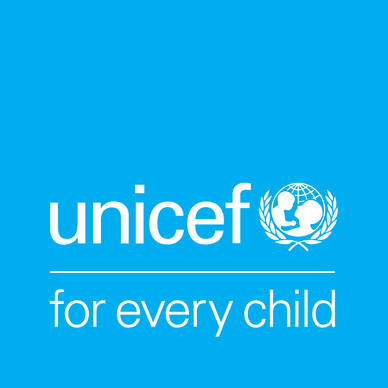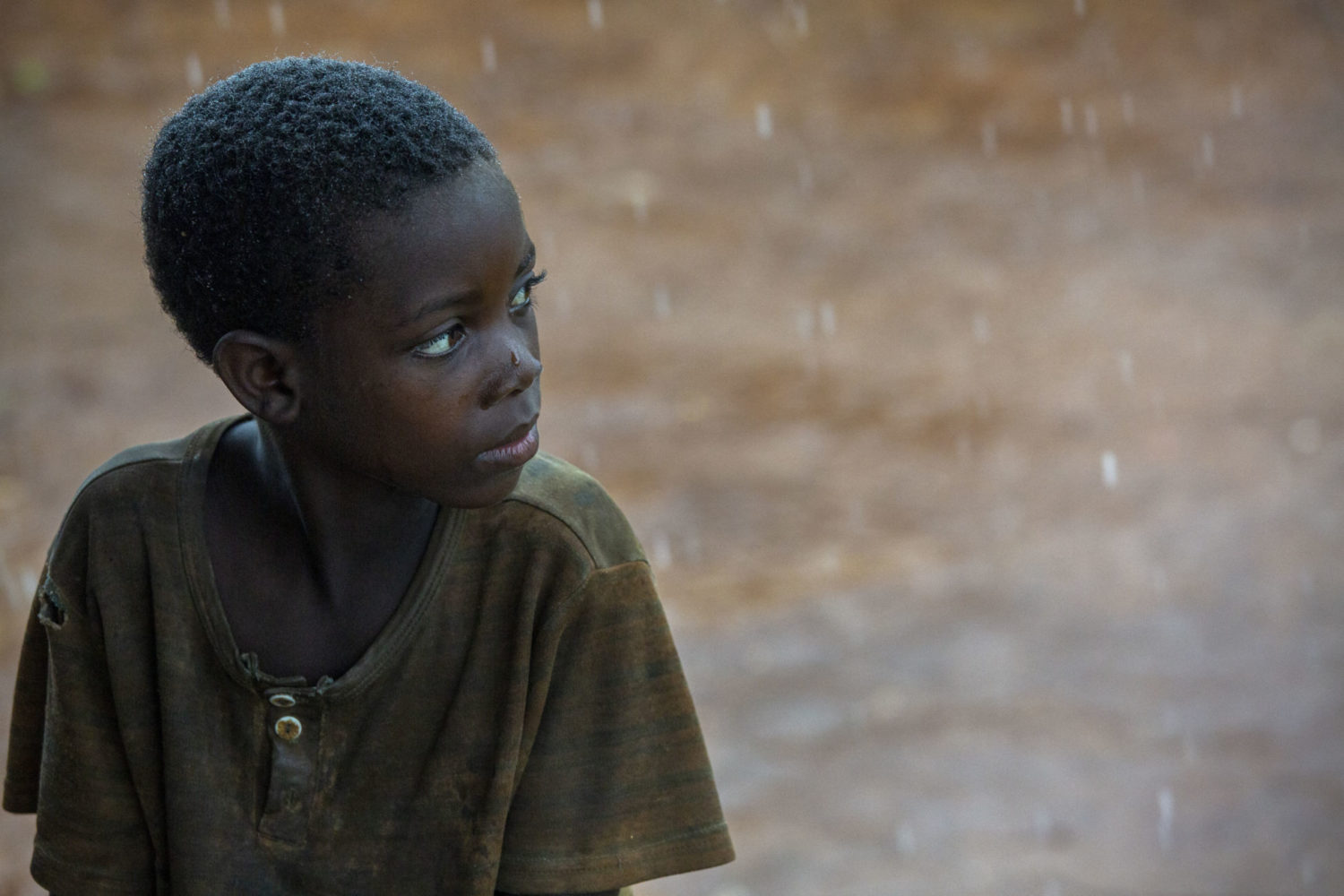LONDON, 20 August 2021 – Young people living in the Central African Republic, Chad, Nigeria, Guinea, and Guinea-Bissau are the most at risk of the impacts of climate change, threatening their health, education, and protection, and exposing them to deadly diseases, according to a UNICEF report launched today.
‘The Climate Crisis Is a Child Rights Crisis: Introducing the Children’s Climate Risk Index’ is the first comprehensive analysis of climate risk from a child’s perspective. It ranks countries based on children’s exposure to climate and environmental shocks, such as cyclones and heatwaves, as well as their vulnerability to those shocks, based on their access to essential services.
Launched in collaboration with Fridays for Future on the third anniversary of the youth-led global climate strike movement, the report finds approximately 1 billion children – nearly half the world’s 2.2 billion children – live in one of the 33 countries classified as “extremely high-risk”. These children face a deadly combination of exposure to multiple climate and environmental shocks with a high vulnerability due to inadequate essential services, such as water and sanitation, healthcare and education. The findings reflect the number of children impacted today – figures likely to get worse as the impacts of climate change accelerate.
“For the first time, we have a complete picture of where and how children are vulnerable to climate change, and that picture is almost unimaginably dire. Climate and environmental shocks are undermining the complete spectrum of children’s rights, from access to clean air, food and safe water; to education, housing, freedom from exploitation, and even their right to survive. Virtually no child’s life will be unaffected,” said Henrietta Fore, UNICEF Executive Director. “For three years, children have raised their voices around the world to demand action. UNICEF supports their calls for change with an unarguable message – the climate crisis is a child’s rights crisis.”
The Children’s Climate Risk Index (CCRI) reveals:
- 240 million children are highly exposed to coastal flooding;
- 330 million children are highly exposed to riverine flooding;
- 400 million children are highly exposed to cyclones;
- 600 million children are highly exposed to vector borne diseases;
- 815 million children are highly exposed to lead pollution;
- 820 million children are highly exposed to heatwaves;
- 920 million children are highly exposed to water scarcity;
- 1 billion children are highly exposed to exceedingly high levels of air pollution1
While nearly every child around the world is at risk from at least one of these climate and environmental hazards, the data reveal the worst affected countries face multiple and often overlapping shocks that threaten to erode development progress and deepen child deprivations.
An estimated 850 million children – 1 in 3 worldwide – live in areas where at least four of these climate and environmental shocks overlap. As many as 330 million children – 1 in 7 worldwide – live in areas affected by at least five major shocks.
The report also reveals a disconnect between where greenhouse gas emissions are generated, and where children are enduring the most significant climate-driven impacts. The 33 ‘extremely high-risk’ countries collectively emit just 9 per cent of global CO2 emissions. Conversely, the 10 highest emitting countries collectively account for nearly 70 per cent of global emissions. Only one of these countries is ranked as ‘extremely high-risk’ in the index.
The UK also features in the report; out of the top 20 country ranking of CO2 emissions, the UK is in the 17th position, accounting for 1.05% of global emissions (CO2). On the Climate Vulnerability Index, the UK comes 111, with the three biggest climate risk factors for children currently coastal floods, heatwaves and water and soil pollution.
“Climate change is deeply inequitable. While no child is responsible for rising global temperatures, they will pay the highest costs. The children from countries least responsible will suffer most of all,” said Fore. “But there is still time to act. Improving children’s access to essential services, such as water and sanitation, health, and education, can significantly increase their ability to survive these climate hazards. UNICEF urges governments and businesses to listen to children and prioritise actions that protect them from impacts, while accelerating work to dramatically reduce greenhouse gas emissions.”
Without the urgent action required to reduce greenhouse gas emissions, children will continue to suffer the most. Compared to adults, children require more food and water per unit of their body weight, are less able to survive extreme weather events, and are more susceptible to toxic chemicals, temperature changes and diseases, among other factors.
“Movements of young climate activists will continue to rise, continue to grow and continue to fight for what is right because we have no other choice,” said Farzana Faruk Jhumu (Bangladesh), Eric Njuguna (Kenya), Adriana Calderón (Mexico) and Greta Thunberg (Sweden) from Fridays for Future, who authored the report’s foreword and are joining in support of the launch. “We must acknowledge where we stand, treat climate change like the crisis it is, and act with the urgency required to ensure today’s children inherit a liveable planet.”
The report outlines recommendations to global governments, businesses and decision makers to reduce the risk presented to children, including:
- Increase investment in climate adaptation and resilience in key services for children. To protect children, communities and the most vulnerable from the worst impacts of the already changing climate, critical services must be adapted, including water, sanitation and hygiene systems, health and education services.
- Reduce greenhouse gas emissions. To avert the worst impacts of the climate crisis, comprehensive and urgent action is required. Countries must cut their emissions by at least 45% (compared to 2010 levels) by 2030 to keep warming to no more than 1.5 degrees Celsius.
- Provide children with climate education and green skills, critical for their adaptation to and preparation for the effects of climate change. Children and young people will face the full devastating consequences of the climate crisis and water insecurity, yet they are the least responsible. We have a duty to all young people and future generations.
- Include young people in all national, regional and international climate negotiations and decisions, including at COP26. Children and young people must be included in all climate-related decision making.
- Ensure the recovery from the COVID-19 pandemic is green, low-carbon and inclusive, so that the capacity of future generations to address and respond to the climate crisis is not compromised.
Specifically, the United Kingdom Committee for UNICEF (UNICEF UK) is urging the UK Government to use COP26 as a pivotal moment to recognise the climate crisis as a child rights crisis.
Anna Kettley, Deputy Executive Director of Advocacy and Programmes for the UK Committee for UNICEF (UNICEF UK), said:
“Children have done the least to cause climate change, yet tragically the impact of the climate crisis is threatening their futures and very survival. Globally, over half the world’s children are exposed to devastating climate risks meaning many are now exposed to the double threat of climate change and Covid-19. In the UK, children will only know a hotter, wetter and more polluted environment unless the climate crisis is treated with the urgency it requires and its unique, long-lasting impact on children is recognised.
“We must act now to protect children and our future generations, and we urge the UK Government to use COP26 to ensure children are listened to and at the heart of the global response to the climate crisis. We want to see the UK Government acting rapidly to reduce greenhouse emissions to net zero, while securing commitments from other governments to do the same, and formally recognising a child’s right to a healthy environment by signing the Intergovernmental Declaration on Children Youth and Climate Action.”
#####
Notes to Editors:
Read the report here.
Download multimedia content here.
The CCRI was developed in collaboration with several partners including the Data for Children Collaborative in Edinburgh – www.dataforchildrencollaborative.com/
In order to make the report more accessible to global youth, UNICEF also collaborated with Climate Cardinals, an international youth led non-profit which translates climate change research and information so that they can reach as many young people and leaders as possible.
For more information, contact UNICEF UK’s press office:
Ceri Gautama – [email protected]
Yemi Lufadeju – [email protected]
Press office – [email protected] – 0207 375 6030
About UNICEF
UNICEF works in some of the world’s toughest places, to reach the world’s most disadvantaged children. Across more than 190 countries and territories, we work for every child, everywhere, to build a better world for everyone.
The UK Committee for UNICEF (UNICEF UK) raises funds for UNICEF’s emergency and development work for children. We also promote and protect children’s rights in the UK and internationally. We are a UK charity, entirely funded by supporters.
United Kingdom Committee for UNICEF (UNICEF UK), Registered Charity No. 1072612 (England & Wales), SC043677 (Scotland).
For more information visit unicef.org.uk. Follow UNICEF UK on Twitter, LinkedIn, Facebook and YouTube.


